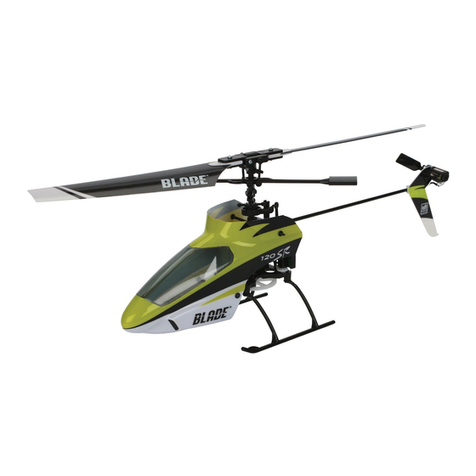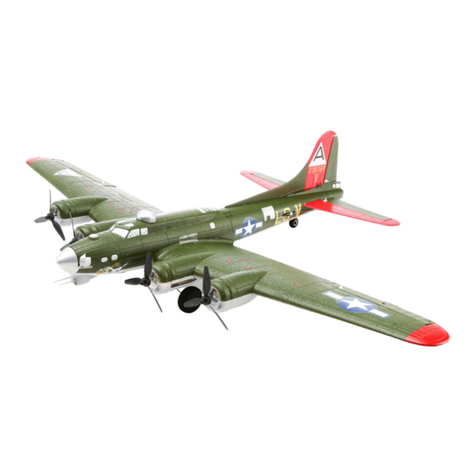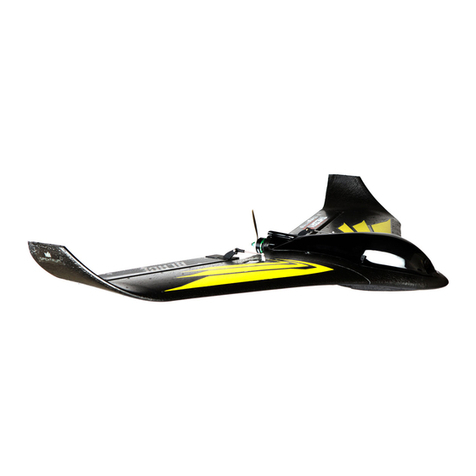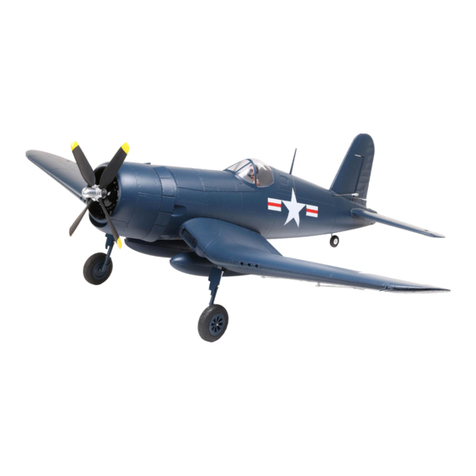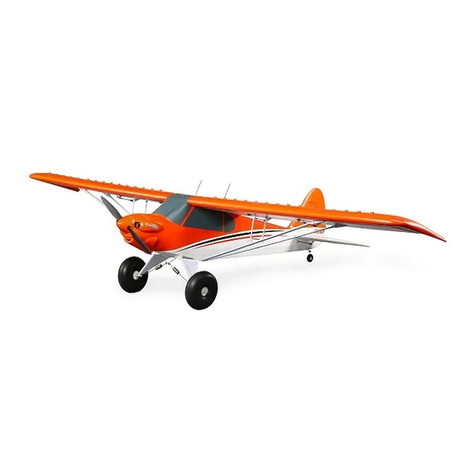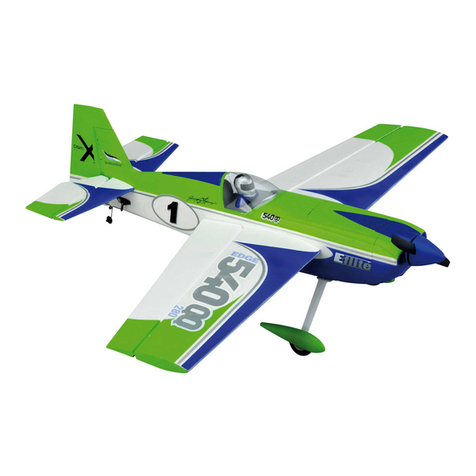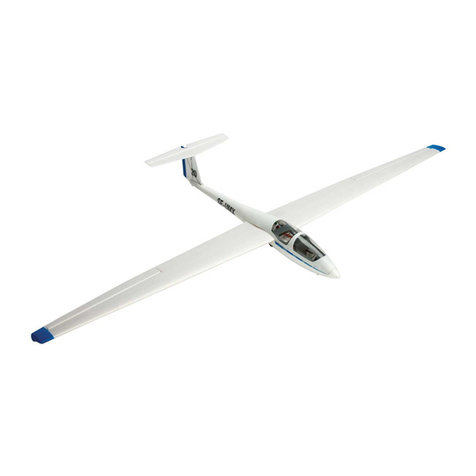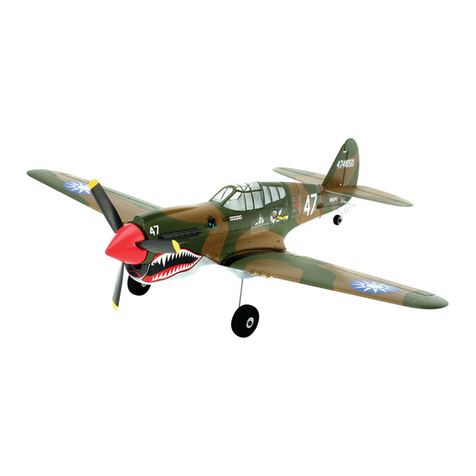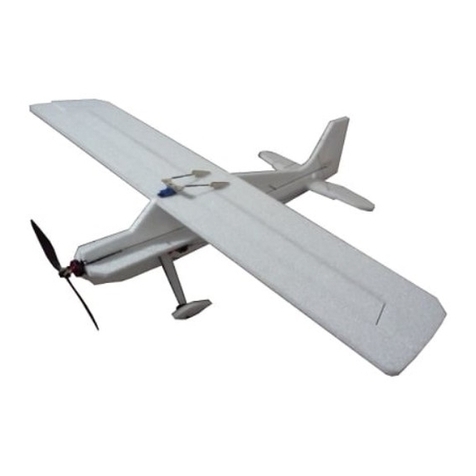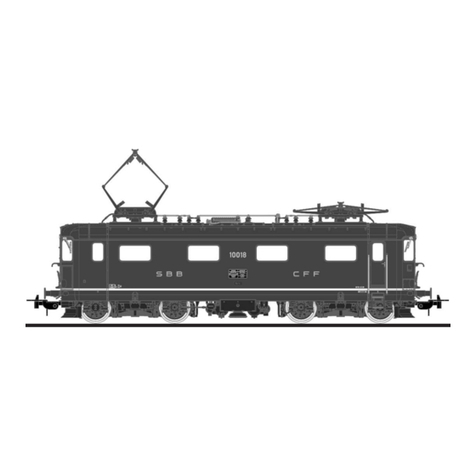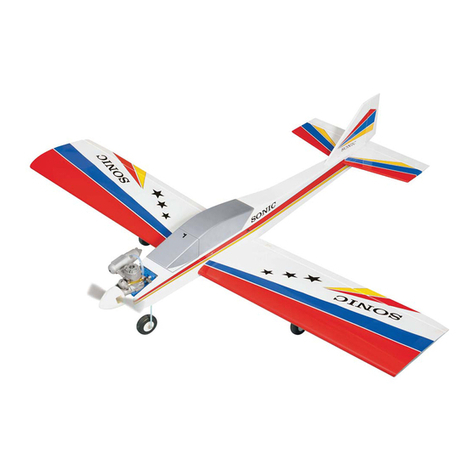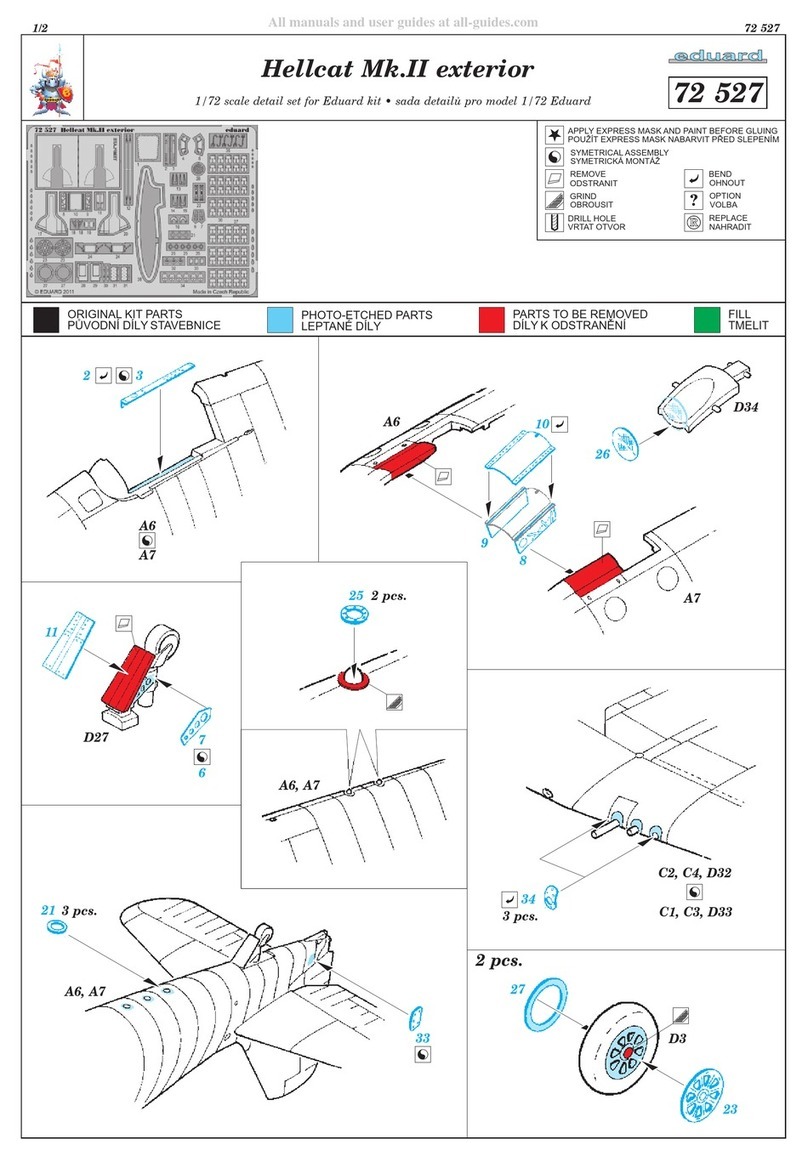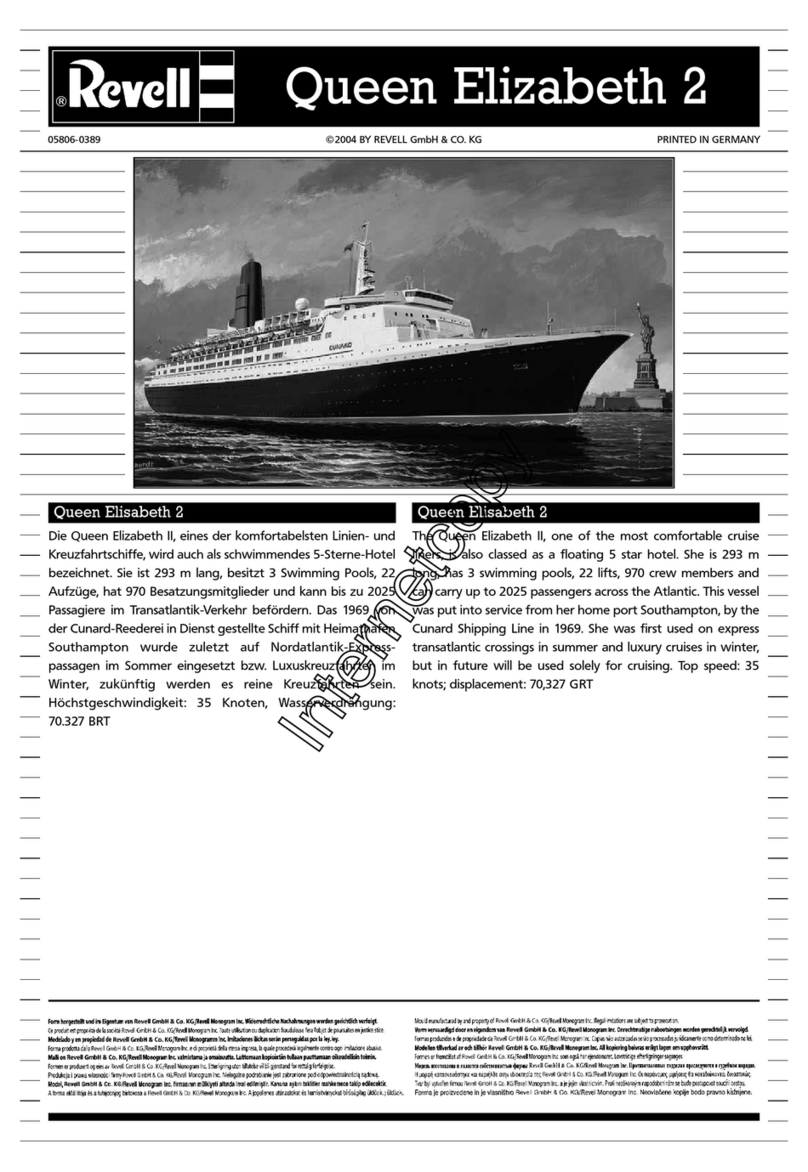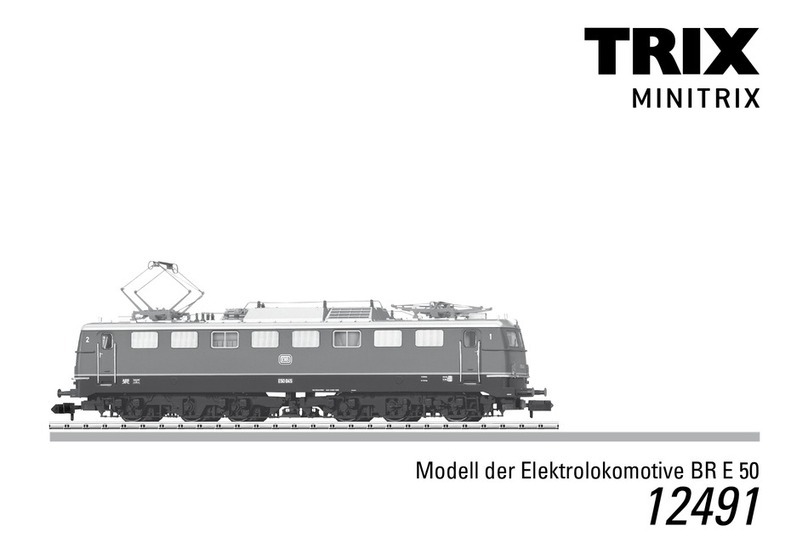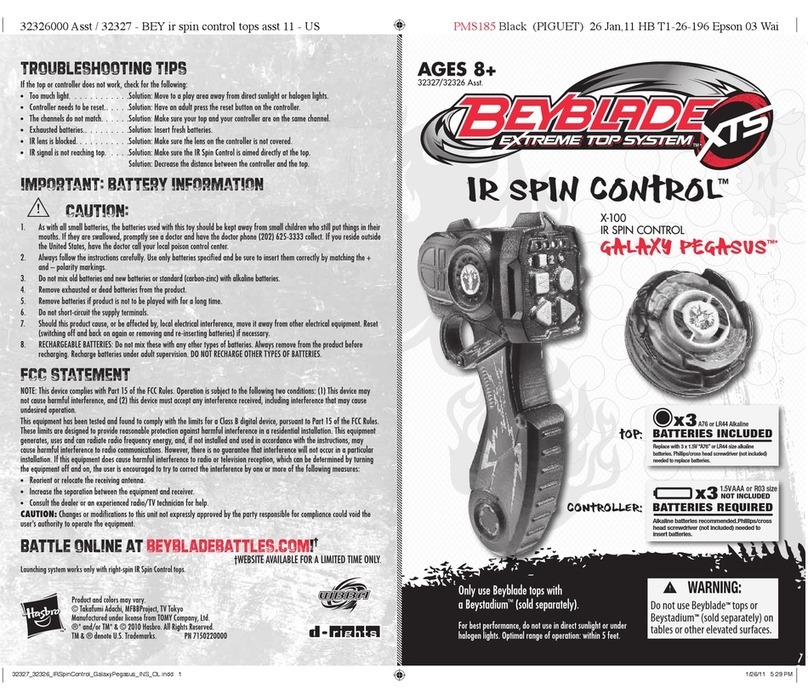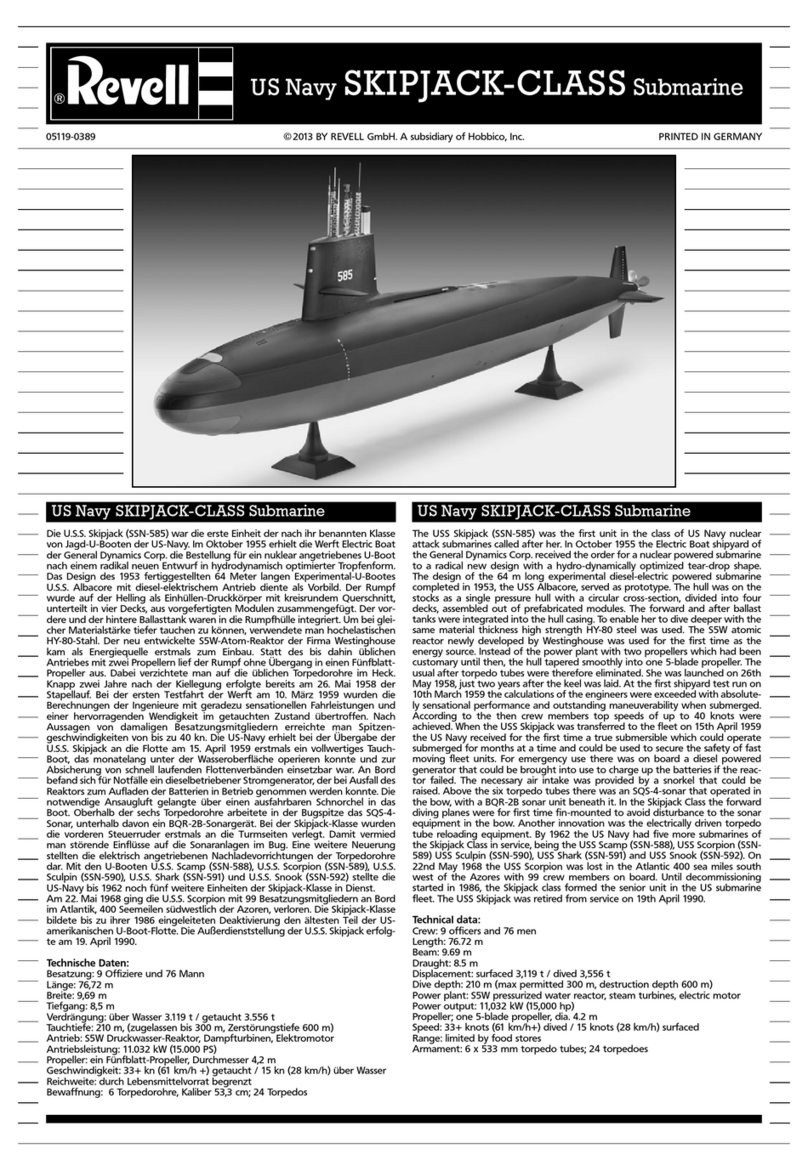BNF Blade 130 S User manual

Instruction Manual
Bedienungsanleitung
Manuel d’utilisation
Manuale di Istruzioni
RTF

2
EN
WARNING: Read the ENTIRE instruction manual to become familiar with the features of the product before
operating. Failure to operate the product correctly can result in damage to the product, personal property and
cause serious injury.
This is a sophisticated hobby product. It must be operated with caution and common sense and requires some basic
mechanical ability. Failure to operate this Product in a safe and responsible manner could result in injury or damage
to the product or other property. This product is not intended for use by children without direct adult supervision. Do
not use with incompatible components or alter this product in any way outside of the instructions provided by Horizon
Hobby, LLC. This manual contains instructions for safety, operation and maintenance. It is essential to read and follow
all the instructions and warnings in the manual, prior to assembly, setup or use, in order to operate correctly and avoid
damage or serious injury.
The following terms are used throughout the product literature to indicate various levels of potential harm when
operating this product:
NOTICE: Procedures, which if not properly followed, create a possibility of physical property damage AND a little or no
possibility of injury.
CAUTION: Procedures, which if not properly followed, create the probability of physical property damage AND a
possibility of serious injury.
WARNING: Procedures, which if not properly followed, create the probability of property damage, collateral damage,
and serious injury OR create a high probability of superficial injury.
• Always keep a safe distance in all directions around
your model to avoid collisions or injury. This model is
controlled by a radio signal subject to interference from
many sources outside your control. Interference can
cause momentary loss of control.
• Always operate your model in open spaces away from
full-size vehicles, traffic and people.
• Always carefully follow the directions and warnings for
this and any optional support equipment
(chargers, rechargeable battery packs, etc.).
• Always keep all chemicals, small parts and anything
electrical out of the reach of children.
• Always avoid water exposure to all equipment not
specifically designed and protected for this purpose.
Moisture causes damage to electronics.
• Never place any portion of the model in your mouth as it
could cause serious injury or even death.
• Never operate your model with low transmitter
batteries.
• Always keep aircraft in sight and under control.
• Always move the throttle fully down at rotor strike.
• Always use fully charged batteries.
• Always keep transmitter powered on while aircraft is
powered.
• Always remove batteries before disassembly.
• Always keep moving parts clean.
• Always keep parts dry.
• Always let parts cool after use before touching.
• Always remove batteries after use.
• Never operate aircraft with damaged wiring.
• Never touch moving parts.
NOTICE
All instructions, warranties and other collateral documents are subject to change at the sole discretion of Horizon
Hobby, LLC. For up-to-date product literature, visit horizonhobby.com and click on the support tab for this product.
Meaning of Special Language
Safety Precautions and Warnings
Age Recommendation: Not for children under 14 years. This is not a toy.
WARNING AGAINST COUNTERFEIT PRODUCTS: If you ever need to replace your Spektrum receiver found in
a Horizon Hobby product, always purchase from Horizon Hobby, LLC or a Horizon Hobby authorized dealer to
ensure authentic high-quality Spektrum product. Horizon Hobby, LLC disclaims all support and warranty with regards,
but not limited to, compatibility and performance of counterfeit products or products claiming compatibility with
DSM or Spektrum technology.

3EN
Box Contents
• Blade®130 S Helicopter
• 300mAh 3S 11.1V 30C Li-Po Battery (RTF Only)
• 3S Li-Po Balancing Charger with AC to DC Adapter (RTF Only)
• MLP6 Transmitter (RTF Only)
• 4 AA Batteries (RTF Only)
Table of Contents
Length 12 in (304mm)
Height 4.5 in (114 mm)
Main Rotor Diameter 12.2 in (310mm)
Tail Rotor Diameter 2.5 in (64mm)
Flying Weight 6 oz (170 g)
Specifications
To receive product updates, special offers and more, register your product at www.bladehelis.com.
Box Contents .................................................................... 3
First Flight Preparation...................................................... 4
Flying Checklist ................................................................ 4
Charging Warnings............................................................ 4
Battery Charging............................................................... 4
Installing the Transmitter Batteries (RTF)........................... 5
Transmitter Control (RTF) .................................................. 5
Transmitter Setup (BNF)....................................................6
Installing the Flight Battery ...............................................8
Transmitter and Receiver Binding...................................... 9
Throttle Hold..................................................................... 9
Control Tests................................................................... 10
Understanding the Primary Flight Controls ...................... 11
Rate Selection ................................................................ 12
Flight Mode Description .................................................. 12
Panic Recovery............................................................... 12
Flying the 130 S.............................................................. 12
Advanced Settings.......................................................... 13
Servo Adjustment ........................................................... 15
Trim Flight ...................................................................... 16
Calibration Procedure ..................................................... 17
Post-Flight Inspection and Maintenance Checklist........... 18
Troubleshooting Guide .................................................... 18
Exploded View ................................................................ 20
Parts Listings.................................................................. 20
Optional Parts................................................................. 21
Limited Warranty ............................................................ 21
Warranty and Service Contact Information ...................... 22
FCC Information.............................................................. 23
IC Information................................................................. 23
Compliance Information for the European Union.............. 23

4
EN
NOTICE: Charge only batteries that are cool to the touch
and are not damaged. Look at the battery to make
sure it is not damaged e.g., swollen, bent, broken or
punctured.
1. Connect the AC to DC adapter to an AC outlet.
2. Connect the AC to DC adapter to the charger.
3. Connect the battery balance lead to the charger.
The connector is keyed to prevent reverse
polarity connection.
4. Always disconnect the flight battery from the charger
immediately upon completion of charging.
LED Indicators
Red Flashing LED: Input power with no battery
connected
Red and Green Solid LEDs: Battery connected and
charging
Red Solid LED: Charge complete
Red and Green Flashing LEDs: Charge error
Charging a fully discharged (not over-discharged) 300mAh
battery takes approximately 1–1.5 hours.
The charger can also be powered through the DC alligator
clips. Connect them to a 11.5–15V DC power source,
noting proper polarity.
CAUTION: Do not connect to AC and DC power
sources at the same time. Doing so may cause
a short circuit, resulting in damage to the product,
personal injury or property damage.
NOTICE: Always connect cable polarities correctly.
Consult the battery instructions, safety sheet or product
support before using a 12V battery with sources other
than a standard AC wall outlet.
CAUTION: All instructions and warnings
must be followed exactly. Mishandling of Li-Po
batteries can result in a fire, personal injury and/or
property damage.
• NEVER LEAVE CHARGING BATTERIES UNATTENDED.
• NEVER CHARGE BATTERIES OVERNIGHT.
• By handling, charging or using the included Li-Po
battery, you assume all risks associated with lithium
batteries.
• If at any time the battery begins to balloon or swell,
discontinue use immediately. If charging or discharging,
discontinue and disconnect. Continuing to use, charge
or discharge a battery that is ballooning or swelling can
result in fire.
• Always store the battery at room temperature in a dry
area for best results.
• Always transport or temporarily store the battery in a
temperature range of 40–120º F (5–49° C).
• Do not store battery or model in a car or direct sunlight.
If stored in a hot car, the battery can be damaged or
even catch fire.
• Always charge batteries away from flammable
materials.
• Always inspect the battery before charging.
• Always disconnect the battery after charging, and
let the charger cool between charges.
• Always constantly monitor the temperature of the
battery pack while charging.
• ONLY USE A CHARGER SPECIFICALLY DESIGNED TO
CHARGE LI-PO BATTERIES. Failure to charge the battery
with a compatible charger may cause a fire resulting in
personal injury and/or property damage.
• Never discharge Li-Po cells to below 3V under load.
• Never cover warning labels with hook and loop strips.
• Never charge batteries outside recommended levels.
• Never charge damaged batteries.
• Never attempt to dismantle or alter the charger.
• Never allow minors to charge battery packs.
• Never charge batteries in extremely hot or cold places
(recommended between 40–120° F or
(5–49° C) or place in direct sunlight.
Charging Warnings
Battery Charging
First Flight Preparation
• Remove and inspect contents
• Begin charging the flight battery
• Program your computer transmitter (BNF only)
• Install the flight battery in the helicopter
(once it has been fully charged)
• Bind your transmitter (BNF only)
• Familiarize yourself with the controls
• Find a suitable area for flying
Flying Checklist
❏Always turn the transmitter on first
❏Plug the flight battery into the lead from the ESC
❏Allow the receiver and ESC to initialize and arm properly
❏Fly the model
❏Land the model
❏Unplug the flight battery from the ESC
❏Always turn the transmitter off last

5EN
Installing the Transmitter Batteries (RTF)
Transmitter Control (RTF)
The LED indicator flashes and the transmitter
beeps progressively faster as the battery voltage
drops.
Replace the transmitter batteries when the
transmitter begins to beep.
D
E
C
B
Flight mode switch
Adjusting Flight Trims
The transmitter beeps each time the trim buttons are
pressed. The middle or neutral trim position is heard as a
longer tone. The end of the trim range is indicated by no
tone when the trim button is pushed.
Dual Rate Selection
The control sensitivity can be changed by pressing and
releasing the right control stick. The LED on the transmitter
will show solid for high sensitivity (default) and flashing for
low sensitivity.
Bind/panic switch
Dual rate
switch
Throttle Hold
ABCDE F
Mode 1
Aileron (Left/Right)
Throttle/Collective
(Up/Down)
Throttle
Trim
Aileron
Trim
Rudder
Trim
Elevator
Trim
Rudder (Left/Right)
Elevator (Up/Down)
Mode 2 Aileron (Left/Right)
Elevator (Up/Down)
Elevator
Trim
Aileron
Trim
Rudder
Trim
Throttle
Trim
Rudder (Left/Right)
Throttle/Collective
(Up/Down)
ON/OFF
Switch
Power LED/
Rate Indicator
A
F

6
EN
Panic Mode Operation
ELEV D/R Switch
Sw Pos 0 = Panic Mode Off
Sw Pos 1 = Panic Mode On
Once the model has returned to level you must manually
return the Panic Mode Switch to the off position and move
the collective stick to 50%, otherwise the cyclic and tail rotor
controls will be reduced.
Program your transmitter before attempting to bind or fly
the helicopter. Transmitter programming values are shown
below for the Spektrum DX6i, DX7s, DX6, DX7, DX8, DX9,
DX18 and DX20.
The files for models using Spektrum™transmitters with
AirWare™software are also available for download online
at www.spektrumrc.com.
To use the Spektrum™DXe transmitter, download the Blade®
130 S DXe model setup available at www.spektrumrc.com
or use the appropriate programming cable and the PC or
mobile app to program the transmitter.
Transmitter Setup (BNF)
Flight Mode Operation
Gear/F Mode Sw: Pos 0 = Stability Mode
Gear/F Mode Sw: Pos 1 = Intermediate Mode
* If you would like to have Agility Mode available
instead of Intermediate Mode increase the Throttle
Curve "STUNT" value to 100 in all positions.
D/R & Expo
Chan Sw Pos D/R Expo
AILE 0 100 +25
1 75 +25
ELEV 0 100 +25
1 75 +25
RUDD 0 100 +25
1 75 +25
Mix 1
GYRO->GYRO ACT
Rate D+125% U+125%
SW ELE D/R TRIM – INH
Timer
Down Timer 4:00
Switch THR CUT
ADJUST LISTSETUP LIST
DX6i
DXe
Throttle Curve
Switch Pos
(F Mode) Pos
1Pos
2Pos
3Pos
4Pos
5
NORM 0 48 66 75 80
STUNT* 80* 80* 80* 80* 80*
TRAVEL ADJ
Channel Travel
THRO 100/100
AILE 100/100
ELEV 100/100
RUDD 100/100
GYRO 100/100
PITC 100/100
REVERSE
Channel Direction
THRO N
AILE N
ELEV N
RUDD N
GYRO N
PITC R
GYRO
RATE SW-F.MODE
0 88% NORM 0
1 12% STUNT 1
Modulation Type
AUTO DSMX-ENABLE
D/R COMBI
D/R SW AILE
Model Type HELI
Swash Type 1 servo
Normal
Pitch Curve
Switch Pos
(F Mode) Pos
1Pos
2Pos
3Pos
4Pos
5
NORM 40 45 50 75 100
STUNT 0 25 50 75 100
HOLD 40 45 50 75 100

7EN
Panic Mode Operation
Trainer/Bind Button
Pressed = Panic Mode On
Released = Panic Mode Off
Flight Mode Operation
F MODE Sw: Pos 0 = Stability Mode
Pos 1 = Intermediate Mode
Pos 2 = Agility Mode
Panic Mode Operation
Bind / I Button: Pressed = Panic Mode On
Released = Panic Mode Off
Flight Mode Operation
Sw B: Pos 0 = Stability Mode
Pos 1 = Intermediate Mode
Pos 2 = Agility Mode
D/R & Expo
Chan
Switch Pos
(Ail D/R) D/R Expo
AILE
0 100/100 +25
1 75/75 +25
2 75/75 +25
ELEV
0 100/100 +25
1 75/75 +25
2 75/75 +25
RUDD
0 100/100 +25
1 75/75 +25
2 75/75 +25
Throttle Hold
Throttle 0% Timer
Mode Count Down
Time 4:00 Tone
Start Throttle Out
Over 25%
SYSTEM SETUP
Model Type HELI
Swash Type 1 servo
Normal
F-Mode Setup
Flight Mode F Mode
Hold Hold
SW Select
Trainer Aux 2
F Mode Gear
Gyro INH
Mix INH
Hold INH
Knob INH
Frame Rate
11ms
DSMX
Chan Travel Reverse
THR 100/100 Normal
AIL 100/100 Normal
ELE 100/100 Normal
RUD 100/100 Normal
Chan Travel Reverse
GER 100/100 Normal
PIT 100/100 Normal
AX2 100/100 Normal
Servo Setup
FUNCTION LIST
DX7s, DX8
Throttle Curve
Switch Pos
(F Mode) Pt 1 Pt 2 Pt 3 Pt 4 Pt 5
N 0 48 66 75 80
18080808080
2 100 100 100 100 100
Pitch Curve
Switch Pos
(F Mode) Pt 1 Pt 2 Pt 3 Pt 4 Pt 5
N 40 45 50 75 100
1 0 25 50 75 100
2 0 25 50 75 100
HOLD 40 45 50 75 100
Mixing
P-Mix 1
Normal
Channels -I- > Ger
Rate 0/–125
Offset 100
Switch Switch I
Position 01
Timer
Mode Count Down
Time 4:00
Start Throttle Out
Over 25%
One Time Inhibit
SYSTEM SETUP
Model Type HELI
Swash Type Normal
F-Mode Setup
Switch 1 Switch B
Switch 2 Inhibit
Hold Switch Switch H
Channel Assign
Channel Input Config
1 Throttle
2 Aileron
3 Elevator
4 Rudder
5 Flight Mode Switch B
6 Collective
Frame Rate
11ms*
DSMX
Servo Setup
FUNCTION LIST
DX6, DX6e
Gyro
Inhibit
Chan Travel Reverse
THR 100/100 Normal
AIL 100/100 Normal
ELE 100/100 Normal
Chan Travel Reverse
RUD 100/100 Normal
GER 100/100 Normal
PIT 100/100 Normal
D/R & Expo
Chan Switch (F) Pos D/R Expo
AILE 0 100/100 0
1 75/75 0
ELEV 0 100/100 0
1 75/75 0
RUDD 0 100/100 0
1 75/75 0
Throttle Curve
Switch (B) Pos Pt 1 Pt 2 Pt 3 Pt 4 Pt 5
N 0 48 66 75 80
18080808080
2 100 100 100 100 100
HOLD 0 0 0 0 0
Pitch Curve
Switch (B) Pos Pt 1 Pt 2 Pt 3 Pt 4 Pt 5
N 40 45 50 75 100
1 0 25 50 75 100
2 0 25 50 75 100
HOLD 40 45 50 75 100
* The DX6e operates
at 22ms frame rate and
cannot be changed.

8
EN
Panic Mode Operation
Bind / I Button
Pressed = Panic Mode On
Released = Panic Mode Off
1. Lower the throttle stick to the lowest position.
2. Power ON the transmitter.
3. Center all trims. For the included MLP6 transmitter
(RTF only), the trims are centered when you hear a
longer tone while pressing the trim button. Move the
trim in both directions until you hear the long tone.
4. Attach the hook material to the helicopter frame and
the loop material to the flight battery.
5. Install the flight battery on the helicopter frame.
Secure the flight battery with the hook and loop strap.
IMPORTANT: If the flight battery hook and loop strap is
pulled too tight, it may result in a vibration or the tail rotor
may drift to the right during flight. If you experience either
of these issues, loosen the strap slightly and fly again.
6. Connect the battery connector to the ESC, noting
correct polarity.
CAUTION: Connecting the battery to the ESC
with reversed polarity will cause damage to the
ESC, the battery or both. Damage caused by incorrectly
connecting the battery is not covered under warranty.
7. Place the helicopter on a flat surface and leave it still
until the ESC beeps and the receiver LED glows solid,
indicating initialization is complete.
If you experience issues during initialization, refer to the
Troubleshooting Guide at the back of the manual.
CAUTION: Always disconnect the Li-Po
battery from the aircraft when not flying to
avoid over-discharging the battery. Batteries discharged
to a voltage lower than the lowest approved voltage
may become damaged, resulting in loss of performance
and potential fire when batteries are charged.
Installing the Flight Battery
1 2 3
Flight Mode Operation
Sw B: Pos 0 = Stability Mode
Pos 1 = Intermediate Mode
Pos 2 = Agility Mode
D/R & Expo Throttle Curve
Chan Sw (F) Pos D/R Expo Sw (B) Pos Pt 1 Pt 2 Pt 3 Pt 4 Pt 5
AILE
0 100/100 +25 N 0 48 66 75 80
1 75/75 +25 1 80 80 80 80 80
2 75/75 +25 2 100 100 100 100 100
ELEV
0 100/100 +25 Pitch Curve
1 75/75 +25 Sw (B) Pos Pt 1 Pt 2 Pt 3 Pt 4 Pt 5
2 75/75 +25 N 40 45 50 75 100
RUDD
0 100/100 +25 1 0 25 50 75 100
1 75/75 +25 2 0 25 50 75 100
2 75/75 +25 HOLD 40 45 50 75 100
Gyro
Inhibit
Chan Travel Reverse
THR 100/100 Normal
AIL 100/100 Normal
ELE 100/100 Normal
RUD 100/100 Normal
GER 100/100 Normal
Chan Travel Reverse
PIT 100/100 Normal
AX2 100/100 Normal
AX3 100/100 Normal
AX4 100/100 Normal
Servo Setup
FUNCTION LIST
DX7G2, DX8G2, DX9, DX18, DX20
Timer
Mode Count Down
Time 4:00
Start Throttle Out
Over 25%
One Time Inhibit
SYSTEM SETUP
Model Type HELI
Swash Type Normal
F-Mode Setup
Switch 1 Switch B
Switch 2 Inhibit
Hold Switch Switch H
01
Channel Assign
Channel Input Config
1 Throttle
2 Aileron
3 Elevator
4 Rudder
5 Gear Switch B
6 Collective
7 AUX 2 Switch I
Frame Rate
11ms
DSMX

9EN
This product requires an approved Spektrum DSM2®/DSMX®compatible transmitter. Visit www.bindnfly.com for a
complete list of approved transmitters. Your RTF transmitter comes prebound to the model. If you need to re-bind, follow
the directions below.
General Binding Procedure
1. Disconnect the flight battery from the helicopter.
2. If you are not using the transmitter included with the RTF version of the helicopter, refer to the Transmitter Setup
Table to correctly program your transmitter.
3. Lower the throttle stick to the lowest position. Set all trims to the center position while the transmitter is on.
4. Power off the transmitter and move all switches to the 0 position. Move the throttle to the low/off position.
5. Install the bind plug in the bind port extension.
6. Connect the flight battery to the ESC. The receiver LED flashes, indicating it is in bind mode.
7. Power on the transmitter in bind mode.
To enter bind mode in the RTF transmitter, press and hold the bind switch while powering on the transmitter.
The transmitter will beep and the LED will blink. Release the bind switch.
8. The helicopter is bound when the LED on the receiver turns solid.
9. Disconnect the flight battery, remove the bind plug and power the transmitter off.
CAUTION: When using a Futaba®transmitter with a Spektrum™ DSM2®module, you must reverse the throttle
channel and re-bind. Refer to your Spektrum module manual for binding and failsafe instructions. Refer to your
Futaba transmitter manual for instructions on reversing the throttle channel.
If you encounter problems, obey binding instructions and refer to the troubleshooting guide for other instructions.
If needed, contact the appropriate Horizon Product Support office.
Transmitter and Receiver Binding
Throttle Hold
Throttle hold is used to prevent the motor from powering on
inadvertently. For safety, turn throttle hold ON any time you
need to touch the helicopter or check the direction controls.
Throttle hold is also used to turn off the motor quickly if the
helicopter is out of control, in danger of crashing, or both.
The blades will continue to spin briefly when throttle hold is
activated. Pitch and direction control is still maintained.

10
EN
Elevator
Elevator down Elevator up
Left Side View Left Side View
Aileron
Collective Pitch
Aileron left
Collective pitch up Collective pitch down
Aileron right
Rear View
Rear View
Rear View
Rear View
Control Tests
Ensure the throttle hold is ON when doing the direction
control tests. Test the controls prior to the first flight to
ensure the servos, linkages and parts operate correctly.
If the controls do not react as shown in the illustrations
below, confirm the transmitter is programmed correctly
before continuing on to the Motor test.
Motor
Place the helicopter outdoors on a clean, flat and level
surface (concrete or asphalt) free of obstructions. Always
stay clear of moving rotor blades.
CAUTION: Keep pets and other animals away
from the helicopter. Animals may injure themselves
if they attack or run toward the helicopter.
1. Both motors beep 3 times when the helicopter’s ESC
arms properly. Before you continue, confirm that
throttle is at full low position.
2. Turn Throttle Hold OFF.
WARNING: Stay at least 30 feet (10 meters) away
from the helicopter when the motor is running. Do
not attempt to fly the helicopter at this time.
3. Slowly increase the throttle until the blades begin to
spin. The main blades should spin clockwise when
viewing the helicopter from the top. The tail rotor
blades should spin counterclockwise when viewing the
helicopter from the right side.
NOTICE: If the main rotor blades are spinning
counterclockwise, reduce the throttle to low immediately.
Disconnect the battery from the helicopter and reverse
any two motor wire connections to the ESC and repeat
the motor control test.

11 EN
Understanding the Primary Flight Controls
If you are not familiar with the controls of your 130 S, take a few minutes to familiarize yourself with them before
attempting your first flight.
Descend
Nose Yaws Left
Rudder left
Throttle up
Rudder right
Throttle down
Climb
Collective
Rudder
Left Side View Left Side View
Forward
Left
Backward
Right
Elevator forward
Aileron left
Elevator back
Aileron right
Elevator
Aileron
Left Side View
Rear View
Top View
Rear View
Top View
Nose Yaws Right
Left Side View

12
EN
Flying the 130 S
Consult your local laws and ordinances before choosing a
location to fly your aircraft.
If this is your first collective pitch helicopter, we suggest
getting assistance from an experienced helicopter pilot or
flying club until you are comfortable flying alone.
We recommend flying your aircraft outside in calm winds
or inside a large gymnasium. Always avoid flying near
houses, trees, wires and buildings. You should also be
careful to avoid flying in areas where there are many
people, such as busy parks, schoolyards or soccer fields.
It is best to fly from a smooth flat surface as this will allow
the model to slide without tipping over. Keep the helicopter
approximately 2 ft (600mm) above the ground. Keep the
tail pointed toward you during initial flights to keep the
control orientation consistent. Releasing the stick in Stabil-
ity Mode will allow the helicopter to level itself. Activating
the Panic Recovery button will level the helicopter quickly.
If you become disoriented while in Stability Mode, slowly
lower the throttle stick to land softly.
During initial flights, only attempt takeoff, landing and
hovering in one spot.
Takeo
IMPORTANT: If the main motor or tail motor do not star-
tup properly when throttle is first applied, immediately
return the throttle to idle and try again. If the problem
persists, disconnect the flight battery, check for binding
in the gear train and ensure no wires have become
entangled within the gears.
Place the model onto a flat, level surface free of obstacles
and walk back 30 feet (10 meters). Slowly increase the
throttle until the model is approximately 2 ft. (600mm)
off the ground and check the trim so the model flies as
desired. Once the trim is adjusted, begin flying the model.
Hovering
Making small corrections on the transmitter, try to hold
the helicopter in one spot. If flying in calm winds, the
model should require almost no corrective inputs. After
moving the cyclic stick and returning it to center, the
model should level itself. The model may continue to
move due to inertia. Move the cycle stick in the opposite
direction to stop the movement.
In Stability Mode the helicopter flies similarly to a fixed
pitch helicopter. The bank angle is limited. When the cyclic
stick is released the model will return to level.
In Intermediate Mode the bank angle is not limited. When
the cyclic stick is released the model will not return to
level. The head speed is slightly lower. The controls have a
"softer" feel. This mode is great for learning forward flight
and basic aerobatics such as stall turns and loops.
In Agility Mode the bank angle is not limited. When the
cyclic stick is released the model will not return to level. The
head speed is higher. This mode is great for 3D aerobatics
such as stationary flips and tic tocs.
Rate Selection
If you get into distress while flying in any mode, push and
hold the Bind/Panic Switch and move the control sticks to
their neutral position. SAFE®technology will immediately
return the aircraft to an upright level attitude, if the aircraft is
at a sufficient height with no obstacles in its path.
NOTICE: Do not activate Panic Recovery if the helicopter
does not have sufficient altitude for a succesful recovery.
Return the collective stick to 50% and release the Panic
Switch to turn off Panic Recovery and return to the current
flight mode.
NOTICE: Before releasing the panic switch, make
sure the collective stick has been returned to the 50%
position. Once the panic switch has been released, full
negative collective becomes available, which could
cause the 130 S to descend rapidly.
• Panic Recovery is intended to provide the pilot with the
confidence to continue to improve their flight skills.
• Move the collective stick to 50% and return all other
transmitter controls to neutral for the quickest recovery.
• Once the model has reached a level upright attitude, the
negative collective is reduced to prevent the user from
pushing the model into the ground.
Change rates by moving the two-position dual rate switch.
• Low rate reduces the control rates, providing an easier to
fly model. Beginners should use low rate for initial flights.
• High rate provides full control and should be used by
intermediate and experience pilots.
Panic Recovery
Flight Mode Description

13 EN
Advanced Settings
The 130 S default settings are appropriate for most users.
We recommend flying with the default parameters before
making any adjustments.
WARNING: To ensure your safety, always
disconnect the motor wires from the ESC
before performing the following steps. After you have
completed the adjustments, reconnect the motor wires
to the ESC before attempting to fly the model.
Gain Parameters
1. Cyclic P Gain Adjustment (Default 100%)
Higher gain will result in greater stability. Setting the gain
too high may result in random twitches if your model
has an excessive level of vibration. High frequency
oscillations may also occur if the gain is set too high.
Lower gain will result in less stability. Too low of a value
may result in a less stable model, particularly outdoors
in winds.
If you are located at a higher altitude or in a warmer
climate, higher gains may be beneficial—the opposite
is true for lower altitude or colder climates.
2. Cyclic I Gain Adjustment (Default 100%)
Higher gain will result in the model remaining still, but
may cause low frequency oscillations if increased too far.
Lower gain will result in the model drifting slowly.
If you are located at a higher altitude or in a warmer
climate, higher gains may be beneficial—the opposite
is true for lower altitude or colder climates.
3. Cyclic D Gain Adjustment (Default 100%)
Higher gain will improve the response rate of your inputs.
If the gain is raised too much, high frequency oscillations
may occur.
Lower gain will slow down the response to inputs.
4. Cyclic Response (Default 100%)
Higher cyclic response will result in a more aggressive
cyclic response.
Lower cyclic response will result in a less aggressive
cyclic response.
5. Tailrotor P Gain Adjustment (Default 100%)
Higher gain will result in greater stability. Setting
the gain too high may result in random twitches if
your model has an excessive level of vibration. High
frequency oscillations may also occur if the gain is set
too high.
Lower gain may result in a decrease in stability. Too low
of a value may result in a less stable model particularly
outdoors in winds.
If you are located at a higher altitude or in a warmer
climate, higher gains may be beneficial—the opposite
is true for lower altitude or colder climates.
6. Tailrotor I Gain Adjustment (Default 100%)
Higher gain results in the tail remaining still. If the gain is
raised too far, low speed oscillations may occur.
Lower gain will result in the tail drifting in flight over time.
If you are located at a higher altitude or in a warmer
climate, higher gains may be beneficial—the opposite is
true for lower altitude or colder climates.
7. Tailrotor D Gain Adjustment (Default 100%)
Higher gain will improve the response rate to your inputs.
If raised too far, high frequency oscillations may occur.
Lower gain will slow down the response to inputs, but will
not have an effect on stability.
8. Tailrotor Adaptive Filtering
Higher gain will reduce oscillations during high speed
flight and when using large amounts of collective.
Lower gain will improve tail performance but may lead
to tail oscillations.
After you become comfortable hovering, you can progress
into flying the model to different locations, keeping the tail
pointed towards you at all times. You can also ascend and
descend using the throttle stick. Once you’re comfortable
with these maneuvers, you can attempt flying with the tail
in different orientations. It is important to keep in mind
that the flight control inputs will rotate with the helicopter,
so always try to picture the control inputs relative to the
nose of the helicopter. For example, forward will always
drop the nose of the helicopter.
The average flight time of the helicopter using the recom-
mended battery is approximately 4 minutes.
Low Voltage Cuto (LVC)
LVC decreases the power to the motors when the battery
voltage gets low. When the motor power decreases and
the LED on the ESC flashes, land the aircraft immediately
and recharge the flight battery.
LVC does not prevent the battery from over-discharge
during storage.
NOTICE: Repeated flying to LVC may damage the battery.
Landing
To land, slowly decrease the throttle while in a low-level
hover. After landing, disconnect and remove the battery
from the aircraft after use to prevent trickle discharge. Fully
charge your battery before storing it. During storage, make
sure the battery charge does not fall below 3V per cell.

14
EN
Once you have entered Gain Adjustment Mode, move the
cyclic stick right and left to select the gain parameter to
adjust. Moving the stick right will select the next parameter.
Moving the stick left will select the previous parameter.
The selected gain parameter is indicated on the Flight Log
screen above and by the lean of the swashplate on the roll
axis as shown in the table at the right.
Parameter # Display
location Swash Position Page #
1 A 100% to the Left 1
2 B 70% to the Left 1
3 L 40% to the Left 1
4 R 10% to the Left 1
5 A 10% to the Right 2
6 B 40% to the Right 2
7 L 70% to the Right 2
8 R 100% to the Right 2
Entering Gain Adjustment Mode
1. Lower the throttle stick to the lowest position.
2. Power ON the transmitter.
3. Install the flight battery on the helicopter frame,
securing it with the hook and loop strap.
4. Connect the battery connector to the ESC.
5. Place the helicopter on a flat surface and leave it still
until the orange receiver LED glows solid, indicating
initialization is complete.
6. Move and hold
both transmitter
sticks to the bot-
tom right corner
as shown.
7. Press and hold the bind/panic switch until the swash
servos move.
8. Release the sticks and the bind/panic switch. The
model is now in Gain Adjustment Mode.
9. Proceed to Adjusting the Gain Values to make any
desired changes.
Adjusting the Gain Values
If you are using a Spektrum™telemetry-enabled transmit-
ter, the gain adjustments can be viewed on the Flight Log
screen. Refer to your transmitter instructions to locate this
screen. The gain parameter currently selected will flash
on the transmitter screen. If you are not using a Spektrum
telemetry-enabled transmitter, the parameter and gain
values are indicated by the position of the swashplate on
the helicopter.
Page number
1 = Cyclic gains
2 = Tail rotor gains
Gain parameter
selected
Gain value
display location
Flight Log Screen
The current gain value for the selected parameter is
indicated on the Flight Log screen and by the angle of the
swashplate (forward or backward) as shown in the table
at the right.
Move the cyclic stick forward or backward to adjust the
gain value. Moving the stick forward will increase the gain
value. Moving the stick backward will decrease the gain
value.
It is always best to adjust one gain at a time. Make small
adjustments (5% or less) and test fly the model to evaluate
the adjustments that were made.
If you would like to reset the current gain value to the
default value of 100%, move and hold the rudder stick full
right for 1 second. The swash will level on the pitch axis,
indicating a 100% gain setting.
Saving the Gain Adjustments
1. Lower the throttle stick to the lowest position and
release the sticks.
2. Press and hold switch I until the swash servos move.
3. Release switch I to save the gain adjustments.
4. Reconnect the main drive motor to the ESC. Your model
is now ready for flight.
Swash Position Gain Value
Full backward 0%
50% backward 50%
Level forward and backward 100%
50% forward 150%
Full forward 200%

15
EN
Servo Adjustment
Your helicopter was setup at the factory and test flown.
The servo adjustment steps are usually only necessary in
special circumstances, such as after a crash or if a servo
or linkage is replaced.
WARNING: To ensure your safety, always discon-
nect the motor wires from the ESC before perform-
ing the following steps. After you have completed the
adjustments, reconnect the motor wires to the ESC before
attempting to fly the model.
Entering Servo Adjustment Mode
1. Lower the throttle stick to the lowest position.
2. Power ON the transmitter.
3. Install the flight battery on the helicopter frame, secur-
ing it with the hook and loop strap.
4. Connect the battery connector to the ESC.
5. Place the helicopter on a flat surface and leave it still
until the orange receiver LED glows solid, indicating
initialization is complete.
6. Hold the left stick
to the bottom
left corner and
the right stick to
the bottom right
corner as shown.
7. Hold the bind/panic switch until the swash servos
move.
8. Release the sticks and the bind/panic switch. The
model is now in Servo Adjustment Mode.
9. Proceed to Adjusting the Servo Neutral Position to
make any desired changes.
Adjusting the Servo Neutral Position
With the model in Servo Adjustment Mode, the control stick
and gyro inputs are disabled and the servos are held in the
neutral position. Check the position of the servo arms to
see if they are perpendicular to the servos.
• If the arms are perpendicular to the servos, no adjust-
ment is necessary.
Exit Servo Adjustment Mode.
• If one or more servo arm is not perpendicular to the
servos, continue the servo adjustment process.
While watching the swashplate servos, apply right cyclic
and release. One of the servos will jump, indicating which
servo is selected. Press right cyclic and release until the
servo that needs to be adjusted is selected.
Once the servo you wish to adjust is selected, move the
cyclic stick forward or backward to adjust the servo neutral
position in the desired direction.
If you would like to reset the current servo to the default
neutral position, hold the rudder stick full right for 1
second.
The range of adjustment is limited. If you are unable to
adjust the servo arm to be perpendicular to the servo, you
must reset the servo to the default neutral position, remove
the servo arm and place it back onto the servo as close to
perpendicular as possible. You may then adjust the servo
neutral position using the forward/backward cyclic stick.
Saving the Servo Adjustments
Before saving your adjustments and exiting servo adjust-
ment mode, verify the swashplate is level and both main
rotor blades are at 0 degrees. If they are not, make linkage
adjustments as necessary.
1. Lower the throttle stick to the lowest position and
release the sticks.
2. Press and hold switch I until the swash servos move.
3. Release switch I to save the servo adjustments.
4. Reconnect the main drive motor to the ESC. Your model
is now ready for flight.
All of the settings are stored internally, so your adjustments
will be maintained each time you initialize the model.

16
EN
Trim Flight
Perform this procedure if the model is not performing well or
has been recently rebuilt from a crash.
The trim flight procedure was performed during the factory
test flight and only needs to be performed if you notice the
model is not returning to level consistently or if the model
does not remain still during stationary pirouettes. The trim
flight is used to determine the optimal settings for SAFE®
technology during flight.
The trim flight must be performed in calm conditions.
Entering Trim Flight Mode
1. Lower the throttle stick to the lowest position.
2. Center all trims. For the included Spektrum MLP6
transmitter (RTF only), the trims are centered when
you hear a higher pitched beep while pressing the
trim button. Move the trim in both directions until you
hear the high-pitched beep.
3. Power ON the transmitter.
4. Install the flight battery in the helicopter.
5. Connect the battery connector to the ESC.
6. Place the helicopter on a flat surface and leave it still
until the motor beeps twice and the blue ESC LED
glows solid, indicating initialization is complete.
7. Place the helicopter where you are going to take off.
8. Move and hold
the left stick
to the bottom
left corner and
the right stick
to the top left
corner as shown.
9. Press and hold the bind/panic switch until the
swashplate rotates around once.
10. Release the sticks and bind/panic switch.
11. The model is ready for the trim flight.
Performing the Trim Flight
1. Slowly increase the throttle to lift the model into a
stationary hover. Make corrections as necessary
to keep the model still. Evaluation does not begin
until the throttle stick is over 50% and the sticks are
centered. Making corrections will not affect the result
but a longer flight may be necessary.
2. Keep the model stationary in a hover for a total of 30
seconds. Sliding and slow movements are okay. The
main goal is to keep the rotor disk level.
3. Once you are satisfied with the trim flight, land the model.
Exiting Trim Flight Mode
1. After landing, lower the throttle stick to the lowest
position.
2. Press and hold the bind/panic switch for 2 seconds,
or until the swashplate twitches, indicating the servo
positions and attitude values have been recorded and
trim flight mode has been exited.
Flight Test
After performing the trim flight, test-fly the model to evalu-
ate the leveling characteristics.
• The model should return to level flight consistently.
• During takeoff, the model should lift off with minimal
corrections.
• During a hover, the control stick should remain close to
center. Small corrections are acceptable.
If the model performs poorly or does not level properly after
the trim flight, retry the entire
trim flight procedure. If the problem persists, inspect the
model for damaged components,
a bent shaft or anything that may result in increased vibra-
tion. The trim flight may not record the correct values due to
excessive vibration, flying in wind or the model not staying
level. In these cases, shorter trim flights may be necessary.
Try the 30-second, level trim flight without corrections
mentioned above first. If the leveling characteristics are not
satisfactory, gradually shorten the trim flights, checking for
improvements until the model performs as described.

17 EN
Calibration Procedure
If the Blade 130 S is experiencing drift issues after completing the trim flight procedure located at
www.bladehelis.com, perform the following calibration. The calibration procedure may also be needed
following crash repairs.
To perform the calibration procedure below, the Spektrum™ AR636 receiver installed in the Blade 130 S must have
the most recent firmware. Receiver firmware updates and instructions are available under “PC Firmware Updates” at
www.spektrumrc.com/technology/AS3X.aspx. The transmitter/receiver programming cable (SPMA3065) is required to
update the receiver firmware.
WARNING: Before beginning the calibration procedure, disconnect the main motor and tail motor leads to
prevent accidental motor startup during calibration.
To perform the calibration procedure:
1. Ensure the surface used for calibration is level.
2. Power on the transmitter and helicopter, allowing them
to initialize.
3. Turn Throttle Hold ON.
4. Ensure the main motor and tail motor leads are
disconnected. Set the flight mode switch to Intermediate
Mode (FM1).
5. Using a bubble level as shown below, level the helicopter
by placing the Blade 130 S foam blade holder under the
tail fin. Use additional items, as necessary, to build up
under the tail fin until the tail boom is level.
6. Hold the left stick
to the bottom
right corner, the
right stick to the
upper left corner
and press the
bind button until
the LED on the receiver flashes once.
7. Release both sticks and the bind button.
8. The LED on the receiver will remain solid for 1-2 minutes
while the calibration takes place. Do not move the
helicopter until the calibration is completed.
If the LED begins blinking rapidly, an error has
occurred. Begin the calibration procedure again,
starting with step 1.
9. After the calibration is successfully completed, the receiver
LED will blink slowly (2 seconds on, 2 seconds off).
10. Power the helicopter off.
11. Reconnect the main motor and tail motor wires.
12. Perform the trim flight procedure as shown in the Advanced
Settings Addendum available at www.bladehelis.com.
13. During subsequent flights after the trim flight, the helicopter
should return to within 5 degrees of level consistently.
Bubble level
Foam blade holder

18
EN
Troubleshooting Guide
Problem Possible Cause Solution
Helicopter control response
is inconsistent or requires
extra trim to neutralize
movement
Aircraft was not initialized properly
or a vibration is interfering with the
sensor operation
Disconnect the flight battery, center the control trim and
re-initialize the helicopter
Helicopter will not
respond to throttle
Throttle too high and/or throttle trim
is too high
Disconnect the flight battery, place the throttle stick in the
lowest position and lower the throttle trim a few clicks.
Connect the flight battery and allow the model to initialize
Helicopter moved during initializa-
tion
Disconnect the flight battery and re-initialize the helicop-
ter while keeping the helicopter from moving
Helicopter has
reduced flight time
or is underpowered
Flight battery charge is low Completely recharge the flight battery
Flight battery is damaged Replace the flight battery and follow the flight battery
instructions
Flight conditions might be too cold Make sure the battery is warm (room temperature) before use
LED on receiver flashes
rapidly and aircraft will
not respond to transmitter
(during binding)
Transmitter too near aircraft during
binding process
Power off the transmitter. Move the transmitter a larger
distance from the aircraft. Disconnect and reconnect the
flight battery to the aircraft. Follow the binding instructions
Bind switch or button was not held
while transmitter was powered on Power off transmitter and repeat bind process
Aircraft or transmitter is too close to
large metal object, wireless source
or another transmitter
Move aircraft and transmitter to another
location and attempt binding again
Post-Flight Inspection and Maintenance Checklist
√
Ball Links
Make sure the plastic ball link holds the control ball, but is not tight (binding) on the ball. When a link is
too loose on the ball, it can separate from the ball during flight and cause a crash. Replace worn ball links
before they fail.
Cleaning Make sure the battery is not connected before cleaning. Remove dust and debris with a soft brush or a
dry, lint-free cloth.
BearingsReplace bearings when they become notchy (sticky in places when turning) or draggy.
Wiring Make sure the wiring does not contact moving parts. Replace damaged wiring and loose connectors.
Fasteners Make sure there are no loose screws, other fasteners or connectors. Do not over-tighten metal screws in
plastic parts. Tighten screws so the parts are mated together, then turn the screw only 1/8th of a turn more.
Rotors
Make sure there is no damage to rotor blades and other parts which move at high speed. Damage to
these parts includes cracks, burrs, chips or scratches. Replace damaged parts before flying. Verify both
main rotor blades have the correct and equal tension in the blade grips. When the helicopter is held up
sideways, the main blades should support their own weight. When the helicopter is shaken lightly, the
blades should fall.
Tail Inspect the tail rotor for damage and replace if necessary. Verify the tail motor bolts, tail rotor adapter bolts and
tail motor mount bolts are properly tightened. Inspect the tail boom for any damage and replace if necessary.
Mechanics
Inspect the main frame and landing gear for damage and replace if necessary. Check the mainshaft for
vertical play and adjust the locking collar if necessary. Verify that the main gear mesh is correct and that
no tight spots exist in the 360 degree rotation. Inspect all wires for damage and replace as necessary.

19 EN
Problem Possible Cause Solution
LED on the receiver flashes
rapidly and the helicopter
will not respond to the
transmitter (after binding)
The bind plug was not removed
from the receiver after binding
Disconnect the flight battery, remove the bind plug from
the receiver and reconnect the flight battery.
Less than a 5-second wait
between first powering on the
transmitter and connecting the
flight battery to the helicopter
Leave the transmitter powered on. Disconnect and
reconnect the flight battery to the helicopter
The helicopter is bound to a
different model memory
(ModelMatch™ transmitters only)
Select the correct model memory on the transmitter.
Disconnect and reconnect the flight battery to the helicopter
Flight battery or transmitter
battery charge is too low Replace or recharge batteries
Aircraft or transmitter is too close to
large metal object, wireless source
or another transmitter
Move aircraft and transmitter to another
location and attempt connecting again
Helicopter vibrates or
shakes in flight
Damaged rotor blades, spindle or
blade grips
Check main rotor blades and blade grips for cracks or
chips. Replace damaged parts. Replace bent spindle
Random movements
in flight Vibration
Verify the receiver is properly attached to the helicopter.
Inspect mounting tape for damage. Verify that no wires
are contacting the receiver. Inspect and balance all
rotating components. Verify the main shaft and tail rotor
adapter are not damaged or bent. Inspect mechanics for
broken or damaged parts and replace as necessary
Tail oscillation/wag or poor
performance
Damaged tail rotor, main gear
mesh, loose bolts, vibration
Verify that the boom support bolts are tight and the plastic
boom support ends are properly adhered to the boom support
rods. Inspect the tail rotor for damage. Verify that all bolts on
the tail assembly are properly tightened.Verify main gear mesh
and ensure no tight spots in the mesh through full rotation.
Replace any damaged or worn components
Drift in calm winds Vibration, damaged linkage,
damaged servo
Under normal operation the transmitter trims should not
require adjustment and the center positions are memorized
during initialization. If you find that trim adjustments are
necessary after take off, verify the balance of all rotating
components, ensure the linkages are not damaged and
make sure the servos are in proper working condition
Drift in wind Normal
The model will drift with the wind but should remain level
in flight. Simply hold the cyclic stick in the necessary po-
sition to keep the model stationary. The model must lean
into the wind to remain stationary, if the model remains
level then it will drift with the wind
Panic Recovery or Return
to Level does not level the
model
Model was not initialized on a level,
still surface Re-initialize the model on a level and still surface
Model was not taken off of a level
surface Always lift off from a level surface
Severe vibration
Battery strapped too tightly to the
model Loosen the battery strap
Rotating component out of balance
Check the main shaft, tail rotor, main rotor blades, main
frame and adapter for damage, replace as necessary.
Vibration must be minimized for Panic Recovery and Re-
turn to Level functions to work properly

20
EN
11
2
22
25
25
11
27
16
5
4
4
3
999
9
88
3
16
24
13
19
20
28
18
26
17
1
14 15
21
23
6
7
12
29
29
29
10
Exploded View
Parts Listings
Part # Description
BLH9300 130 S RTF
BLH9350 130 S BNF
1 BLH2020 Tail Rotor Hub Set
2 BLH9318 Dual Brushless ESC Apache AH-64
3 BLH3401 Main Blade Grips: 180 CFX
4 BLH3403 Feathering Spindle Set: 180 CFX
5 BLH3404 Main Rotor Head Block: 180 CFX
6 BLH3405 Rotor Head Linkage Set: 180 CFX
7 BLH3406 Swashplate: 180 CFX
8 BLH3438 2.5x6x2.8mm Thrust Bearing: 180 CFX
9 BLH3439 2.5x6x1.8mm Radial Bearing
10 BLH3440 5x8x2mm Radial Bearing: 180 CFX
11 BLH9301 Main Frame: 130 S
12 BLH9302 Main Gear (2): 130 S
13 BLH9303 Landing Gear: 130 S
14 BLH9304 Tail Boom (2): 130 S
15 BLH9305 Vertical Tail Fin/Motor Mount Set: 130 S
Part # Description
16 BLH9306 Main Rotor Blades: 130 S
17 BLH9307 Tail Rotor Blade Set: 130 S
18 BLH9308 Main Shaft (2): 130 S
19 BLH9309 Brushless Main Motor: 130 S
20 BLH9310 Main Motor Mount: 130 S
21 BLH9311 Brushless Tail Motor: 130 S
22 BLH2025 Main Blade Holder: 200 SRX
23 BLH9313 Servo Linkage Set: 130 S
24 BLH9314 Stock Canopy, Orange 130 S
24 BLH9315 Stock Canopy, Green: 130 S
25 BLH9316 Body Post Set: 130 S
26 BLH9317 Anti-Rotation Bracket: 130 S
27 EFLB3003SJ30 E-flite 300mAh 3S 11.1V 30C LiPo, JST
28 SPMA3177 Blade Replacement Receiver: 130 S
29 SPMSH2045L 2.9g Linear Long Throw Servo: 130 S
BLH9319 Replacement RTF Transmitter
BLH9319M1 Replacement RTF Transmitter, Mode 1
Table of contents
Other BNF Toy manuals

BNF
BNF Blade 300 X User manual
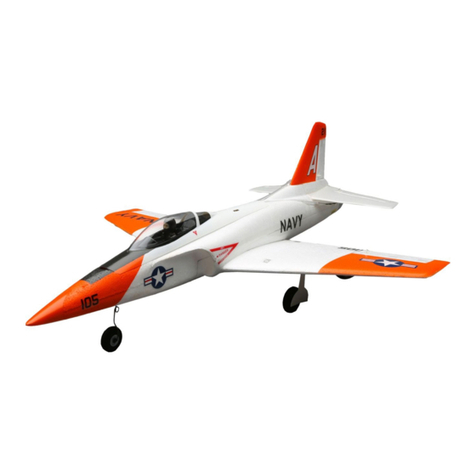
BNF
BNF UMX Habu S DF180 User manual
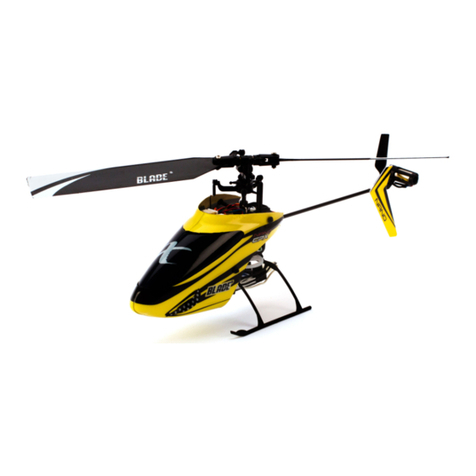
BNF
BNF Blade Nano CPX User manual
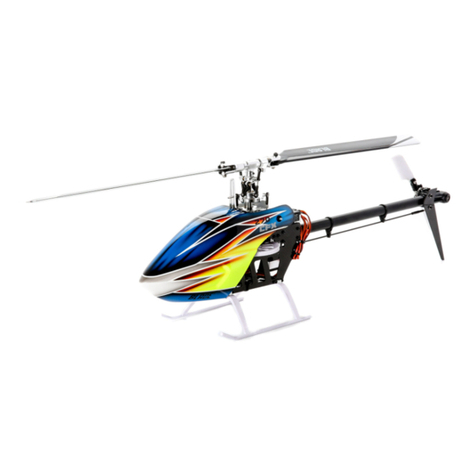
BNF
BNF Blade 270 CFX User manual
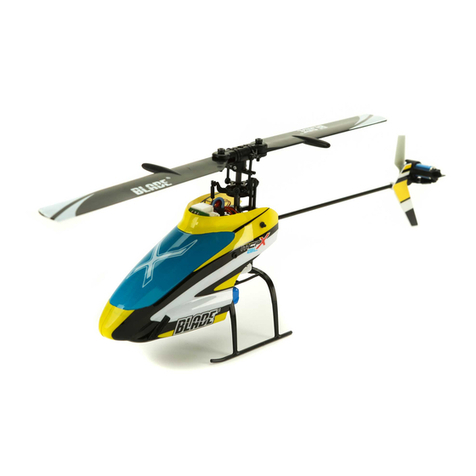
BNF
BNF Blade MCP X BL User manual
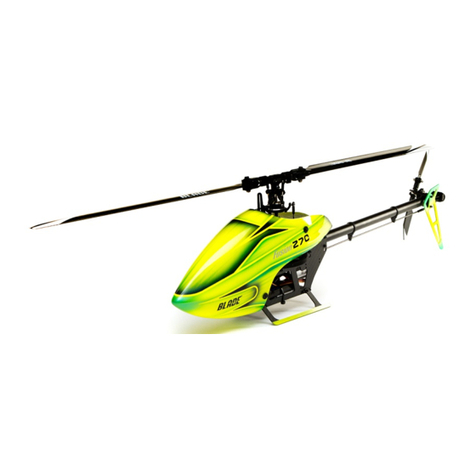
BNF
BNF Blade Fusion 270 User manual

BNF
BNF BLADE 450 X User manual

BNF
BNF Blade 300 X User manual
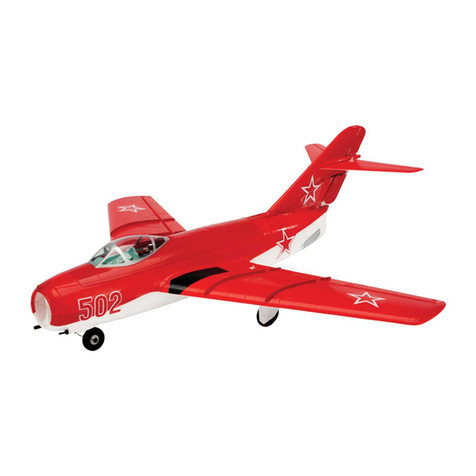
BNF
BNF UMX MiG 15 DF User manual
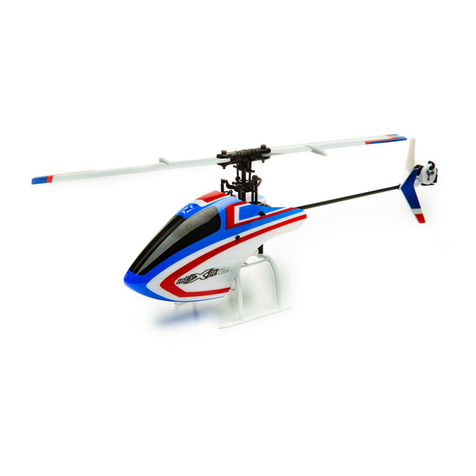
BNF
BNF Blade mCP X User manual
Popular Toy manuals by other brands
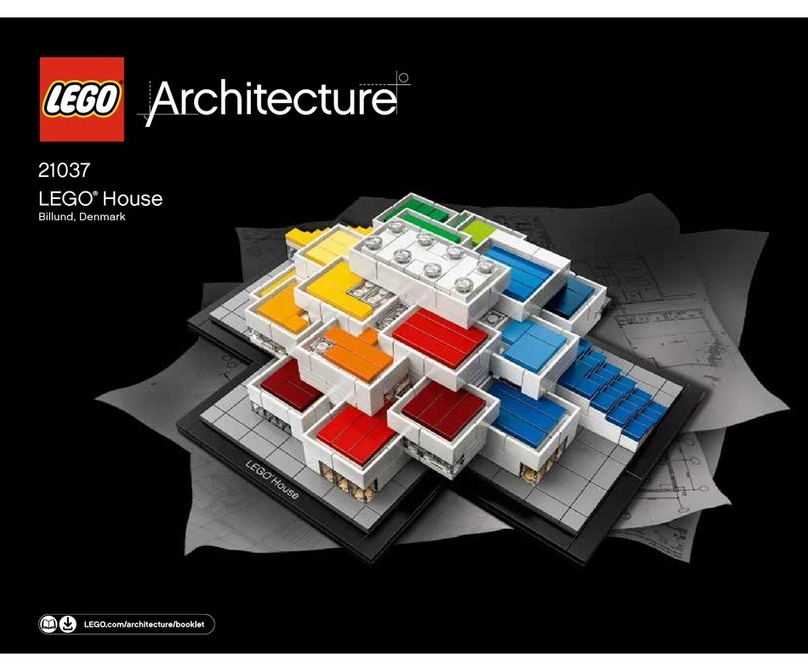
LEGO
LEGO Architecture 21037 Assembly instruction
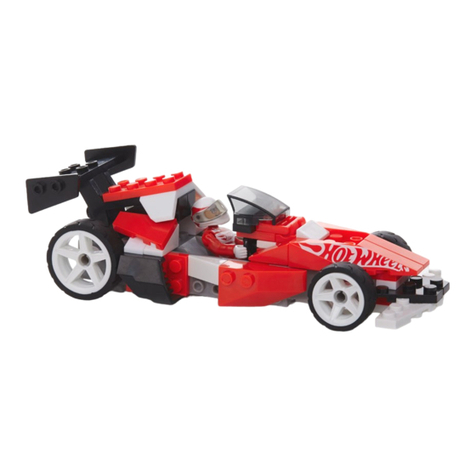
Mega Bloks
Mega Bloks Hot Wheels T-Blast manual
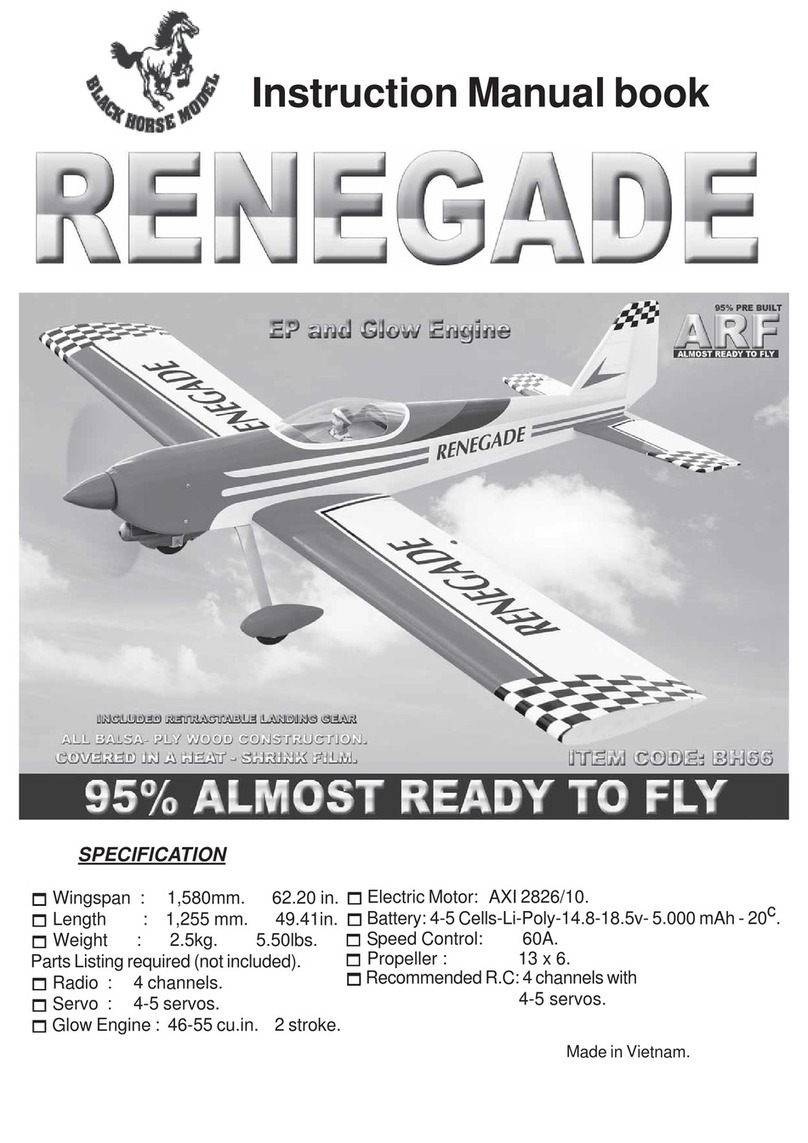
Black Horse Model
Black Horse Model renegade bh66 Instruction manual book

Fisher-Price
Fisher-Price Little People GWD31 manual

Eduard
Eduard 36 146 manual
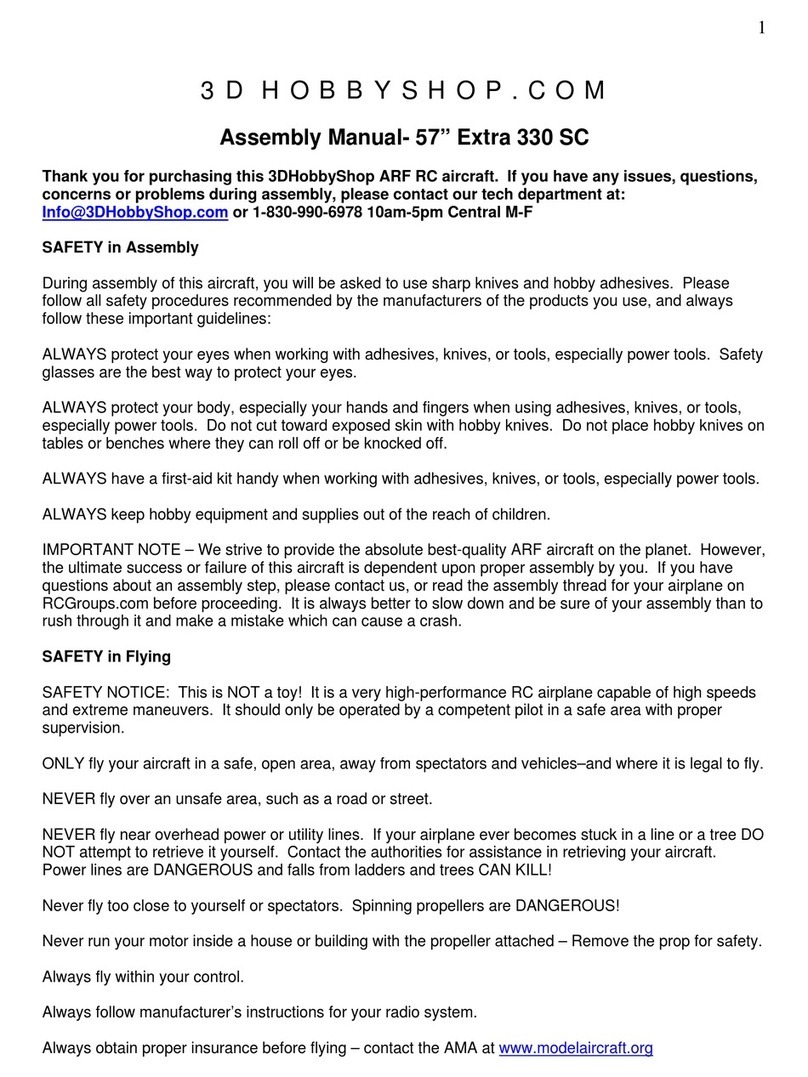
3D Hobby Shop
3D Hobby Shop 57" Extra 330 SC Assembly manual

